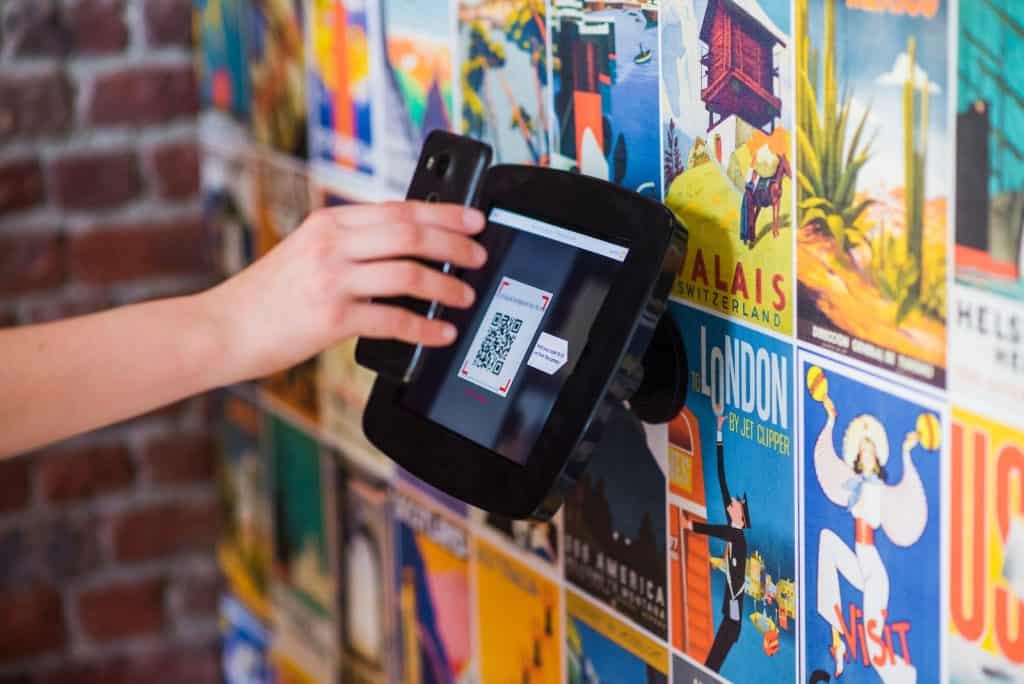What role will touchless authentication play in a post-COVID workforce? What touchless tech is already being implemented?
Table of Contents
ToggleNo one could have anticipated the COVID-19 pandemic and how it would impact every part of our lives. Now, as we swiftly cross the 18th month of the pandemic and wait for a return to normality, new technologies designed to prevent the spread of this and future viruses are beginning to become commonplace.
Will COVID Become Endemic?
We’ve spent the last 18 months staying home, waiting for the vaccine to arrive, and hoping for things to slowly go back to normal. While the vaccine and other precautionary measures will help to eventually slow the spread of the virus, experts believe COVID-19 is likely to become endemic. Similar to the annual flu virus, COVID-19 won’t just vanish at the end of the pandemic. Instead, it will linger, but the majority of the population will have enough collective immune protection to prevent it from reaching pandemic levels again.
As it stands, we may end up with a regular COVID season just like the flu season. It may become a fact of life. In that case, these touchless authentication tools will become even more valuable to prevent future virus pandemics from spreading as quickly and efficiently as COVID-19 did.
How Does Touchless Tech Work?
Most modern authentication technology requires some form of physical contact, whether you’re punching in a passcode, scanning an ID card, or using biometrics in the form of fingerprint, palm, or retinal scanners. Before 2020, most designers didn’t take the need for antimicrobial surfaces into account, so all of these items tend to provide the ideal environment for spreading bacteria and viruses from person to person.
We started to see the rise of touchless tech in the form of tap-to-pay cards that use an RFID chip embedded in the card’s surface to transmit the card information directly to the point of sale without ever having to touch the keypad or slide the card. A MasterCard survey found that 79% of card users are utilizing contactless payment options as a result of the pandemic. This is great for consumers making purchases, but unless a company is investing in RFID-enabled ID cards for its entire staff, it doesn’t translate well to commercial applications.
Other tools include QR codes and other mobile technologies like secure smartphone apps that allow workers to clock in or even enter secure facilities without having to touch anything but the door handle — and adding an automatic door removes that contact point as well, helping to keep workers safe and healthy while they’re in the office.
New Touchless Authentication Ideas for Businesses
While temperature checks aren’t a foolproof way to determine who might have COVID, keeping people out of the office while they’re running a fever is a good rule of thumb regardless of the cause — especially in health care settings or assisted living facilities where patients and residents are at a higher risk.
Companies have introduced technology such as touchless time clocks for just these situations. Some generate a QR code for the employee to scan at the time clock. As they do, the device uses an IR thermometer to check their temperature. In addition to reducing the spread of viruses like COVID-19 and the flu, this sort of touchless time clock helps employees clock in and out much faster than more traditional methods.
Biometric scans like palm readers might seem like the antithesis of touchless authentication, but new upgraded options allow the user to keep their palm up to 6 inches away from the scanner while still providing accurate scans and increased security. Voice recognition and iris scanners are also becoming popular because they do not require any sort of contact. A study completed by KBV Research found that the contactless biometric industry will likely be worth $18.6 billion by 2026.
Even facial recognition has started popping up as a payment option in some areas. PopID recently set up its facial recognition payment system in 25 different restaurants and retailers around California. There are touchless authentication options available, but they’re just beginning to emerge as viable options outside of retail circles.
Adding facial recognition and other biometrics to the average business generates massive amounts of data, more than most people could hope to sort through in a lifetime. Introducing this information to an AI-powered machine learning system can help business owners identify customer demographics, track security issues, and more. As the COVID-19 pandemic continues, it could even be a valuable tool for contact tracing, allowing businesses to carry out quick temperature scans and helping local, state, and federal governments track the spread of the virus.
Touchless Tech – Preparing for the Future
COVID-19 may be the first global pandemic that has happened in our lifetimes, but it isn’t the first. As the climate continues to change and the planet warms, it likely won’t be our last. Melting permafrost is releasing frozen animals that died of virus strains that haven’t been seen on the surface in millennia — and we have no natural immunities to them.
We need to take the lessons we’ve learned during the COVID-19 pandemic and apply them to our daily life moving forward, so hopefully, another pandemic won’t be able to grind the world to a halt as this one did.





